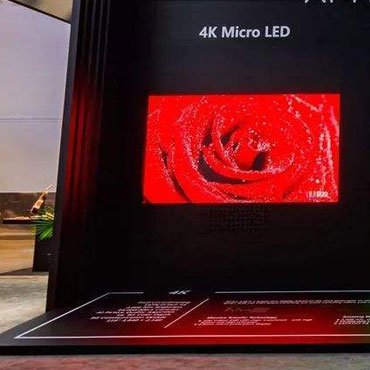OLED is one of the most common display technologies used in cell phones, monitors and TVs today, so we are not too unfamiliar with it. If we want to know more about OLED display technology, let’s read on.
Definition of OLED
OLED stands for Organic Light Emitting Diode, which mainly refers to polymers with thin films of organic compounds. It carries the name LED, but has a significantly different construction than the LEDs we see, and in fact, is more similar to an LCD.

How OLED Technology Works
Here we’ll go a little deeper into precisely how the technology works, step by step.
Layers of an Organic Light-Emitting Display
The OLED would include hundreds of things, or layers that work in collaboration to provide an image on the screen. They are stacked on top of each other, although they happen to be very thin. They are highly crucial to the way OLED screens work.
The Substrate Layer
This forms the base of the OLED, providing structure support; it could be from glass or plastic material. And that’s where the rationale for some of the OLED displays-being flexible-comes in, primarily in smartphones.
The Organic Layer
These are the layers where it all happens. As we previously described, the term “organic” refers to the carbon-based material. Here, there are two major parts: the emissive layer and the conductive layer.
Emission occurs in the emissive layer, while the conductive layer carries the electricity from the positive side to the negative side.
The Cathode and Anode
One is the cathode, and the other is the electrode on the opposite side. Here, the cathode will act like a supplier of electrons, and the anode removes the electrons to create a flow of electricity through the organic layers.

How OLEDs Emit Light
Here is a brief overview of how OLEDs emit light.
Current Flow
OLED displays are powered by electricity, which flows through the anode and cathode. This allows electrons and “holes” to flow through the organic layers. A “hole” is a concept in electronics that represents the absence of an electron; it acts like a positive charge.
Movement of electrons and holes
In a conducting layer, electrons move from the cathode to the emitter layer and holes move from the anode to the same region.
Once the emission layer is reached, the electrons and holes combine there. These recombinations of electrons and holes emit energy in the form of light.
Light Emission
In the emissive layer, when electrons and holes combine, the organic compound itself emits photons directly. This emitted light forms the image on the screen.
Colors are therefore produced according to the organic materials used in the emissive layer, as different materials emit different colors when an electric current is passed through them.
Colors in OLED Display
In an OLED display, different colors are achieved with the help of various organic compounds present in the emissive layer. These compounds are actually designed to emit a certain wavelength of light when the electric current passes through them. Consequently, they produce red, green, and blue colors, which combine into all the colors on your screen.
Every pixel within the OLED display has sub-pixels for red, green and blue light.
By altering the brightness of every sub-pixel, OLEDs allow for a wide range of colors. This means, in short, that colors become highly vivid and exact; therefore, color gamut is much wider when compared to traditional displays.
Conclusion
The light principle is very different in OLED technology. Briefly, organic material will be able to emit light if one applies electricity. Without backlighting, displays can not only be made thinner and more flexible, but also have better contrasts with a more efficient energy supply.
That is the reason every pixel of the OLED screen illuminates itself, which sets up an impressive visualization along with well-lit colors.




